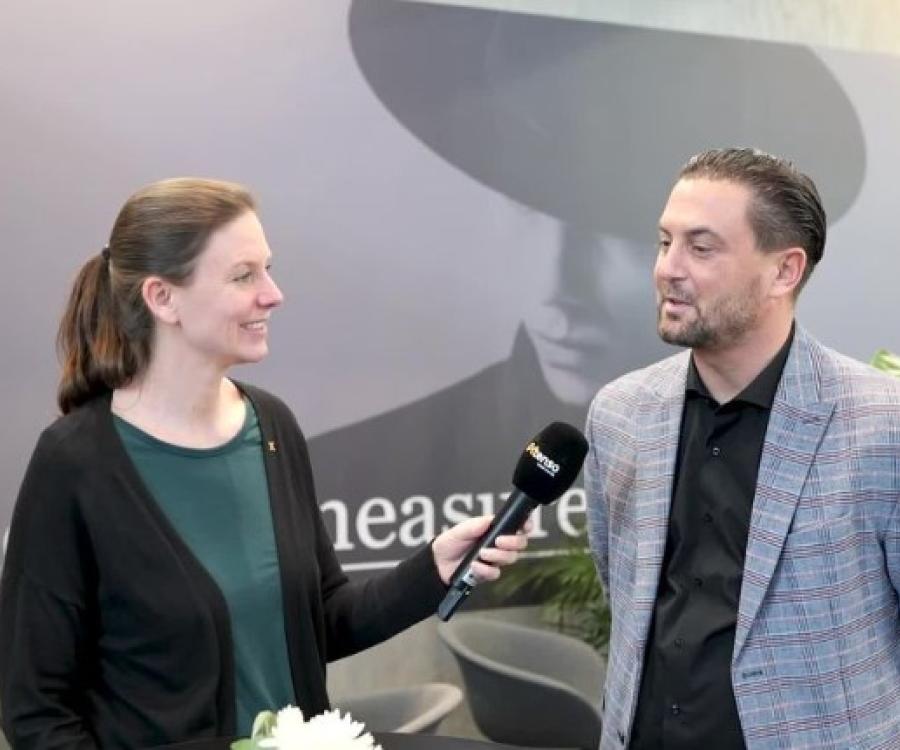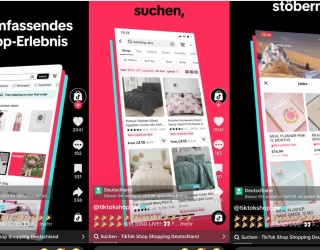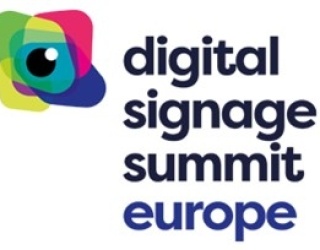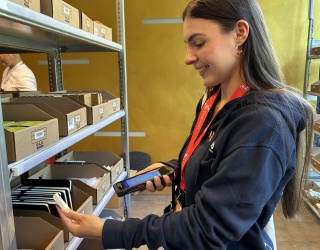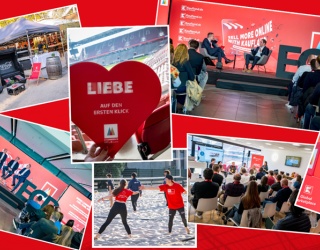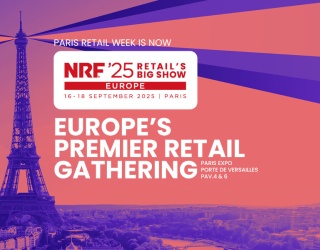Swimwear is one of the trend segments in the fashion industry, but individual patterns are still rare. This is why Nadia Schiller, a student at the Niederrhein University, wrote her diploma thesis on the subject. She designed a swim and leisurewear collection for the C&A fashion group. The colourful models were produced using digital printing. Modern printing processes open new creative possibilities to designers, limited colour concepts are a thing of the past, and manufacture even of small runs is possible at limited cost. State-of-the-art techniques and applications will also once again be on show at viscom, International Trade Fair for Visual Communication, Technology and Design from 13 to 15 October 2011 in Düsseldorf. About 11,000 trade visitors, many of them experts from the processing industries such as textile and fashion are expected. One of the exhibitors is Niederrhein University.
Playing with the (in)visible
With the first rays of spring sunshine their time comes again: triangle bikinis, one-pieces, tankinis, swimsuits. The simple sports models have long been replaced by swimwear with a décor so elaborate that it also looks good at the beach bar or even as a top to be worn in the city. As a result customers have high expectations of design. Increasingly this is also true for the lower-priced categories. Nadia Schiller who took her textile design degree with Professor Angelika Rösner of Niederrhein University in the spring of 2011 was not interested in working for Missoni or Emilio Pucci but with the German fashion group C&A.
Digital printing as connecting link
"For my diploma thesis I worked together with C&A Buying KG in Düsseldorf", the designer says. "The task was to design a printed, individual line of swim and leisurewear for 2011. Since the swimwear sector quite generally sees a change toward more individualism, the collection is not limited to a particular age group but aims to appeal to different types of women." With this in mind, Schiller developed a broad selection ranging from a teeny surfer bikini to models with stronger support for curvier figures, as well as matching beach bags, sarongs and beach towels. But style and fit were only marginal considerations in her thesis - after all, she studied Textile Design at the Department of Design at Niederrhein University. Her subject is part of the long-established Product Design course which covers a broad field. Glass, ceramic and textile design are taught here, but also product design and colour design. The challenge is to handle the numerous restrictions imposed by the production process creatively and effectively. In textile printing, for instance, lengths of repeat and number of required dyes are significant. Since this is difficult to visualise on the computer, Professor Rösner's laboratory houses a small-scale digital production line for different inks and technologies, among them the Arachne Combo 74/V8 digital printer manufactured by the South Korean company Dgen and a large variety of specialised design, engraving, colouring and colour management software.
Modelled on microbiology
The department laboratory was also where Nadia Schiller turned her textile dreams into reality, delicate, unusual patterns in pastel and bright colours, printed in great detail on a strongly stretching Lycra mix, which is a standard material in the swimwear industry. The underlying design ideas are not obvious at first glance, and quite intentionally so: Schiller's collection is called "Witness the Invisible". "Microorganisms are invisible to the naked eye. The underlying idea is to bring the invisible to light, and thus to make it visible," is how the designer describes her source of inspiration. She has distorted and creatively modified the macro photographs so as to produce the patterns for the five sub lines "Rising Harmony", "Infinity Dream", "Bright Emotions", "Magical Power" and "Donna".
Since C&A which operates close to 500 outlets in Germany alone is looking for designs that can be produced efficiently even in large quantities, Schiller's patterns are optimised for conventional processes like rotary printing. For large production runs, inkjet techniques still remain more expensive - although, due to the enormous cost involved for producing artwork, the point at which analogue techniques start to be less costly is steadily rising. Some modern high-performance inkjets have an output of several hundred square meters per hour. Since no expensive artwork is needed they can also produce single copies economically. For designers, however, the crucial aspect of digital printing is the fact that it removes the limitations imposed by analogue techniques: print repeats are superfluous, and so are limited colour concepts. Schiller can well imagine that in a few years time, the market will see customised swimwear produced to the wearer's specifications. The necessary technology already exists today.
viscom from 13. - 15. October in Düsseldorf
This technology will be shown at viscom. In cooperation with the raumPROBE materials agency and Mutoh Deutschland, the newly established Customised Design Forum at viscom offers everything related to the digitally printed world. Some 150 innovative materials and samples are on display. In the special show "Customised Design meets Materials", exhibitors present their most innovative materials and examples of realisation in the areas of furniture, floor coverings and facades, walls and ceilings, textile and glass, as well as other material innovations, elements for the PoS and brand design. The centre piece of the Customised Design Forum is the "print design!" object section designed by various manufacturers of machinery and materials. On an area of some 100 sqm and with a great variety of exhibits, the participating companies give an impressive presentation of the options digital printing offers today. There will also be another edition of the "From pixel to product" presentation which shows the digital workflow from digital image via image processing to the final product and the moving image. At the "Customised Printing Workshop" an entire day is devoted to the subject of customised design. Experts supply information on customising and finishing technologies, production procedures and technologies and present examples of best practice.
In 2011 viscom, which alternates between Frankfurt and Düsseldorf, takes place in Düsseldorf from 13 to 15 October. Approximately 350 exhibitors and 11,000 trade visitors are expected.





